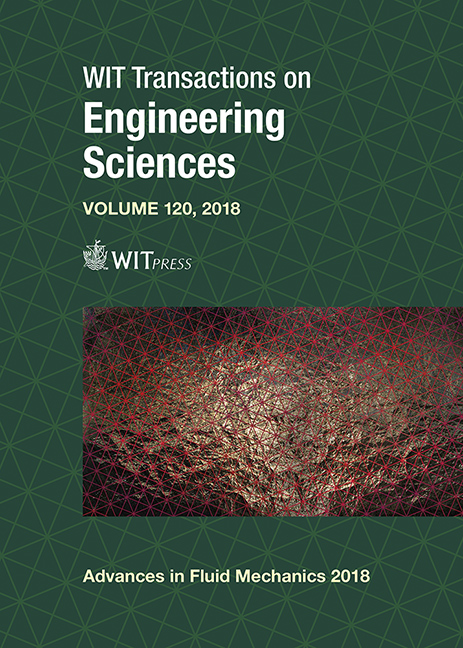FUNDAMENTAL SOLUTIONS IN COMPUTATIONAL FLUID DYNAMICS
Price
Free (open access)
Transaction
Volume
120
Pages
8
Page Range
1 - 8
Published
2018
Size
178 kb
Paper DOI
10.2495/AFM180011
Copyright
WIT Press
Author(s)
LEOPOLD ŠKERGET, ANTÓNIO TADEU, JURE RAVNIK
Abstract
With the boundary element method (BEM), the velocity-vorticity formulation is introduced and the overall Navier–Stokes problem is partitioned into the kinetic and kinematic parts. For a general viscous flow, the kinetics is formulated as a differential nonlinear vorticity diffusion-convective transport equation, whilst the kinematics of the fluid flow computation is governed by the Biot–Savart integral representation. This work presents an overview of the numerical simulation of transport phenomena in fluid flow using a different type of Green’s fundamental solutions in the context of BEM. The kinetic diffusion-convective partial differential equations (PDEs) represent, respectively, mixed elliptic-hyperbolic or parabolic-hyperbolic types of PDEs, governing the steady or time dependent transport phenomena in fluid flow, e.g. transfer of heat energy, momentum, vorticity, etc. Applying the singular integral representations has important numerical and physical aspects as a consequence of the fundamental solutions applied. The solution algorithm is based on improved macro-elements concept using mixed-boundary elements. The numerical model uses quadratic approximation for all field functions and linear approximation of the fluxes over space and constant approximation over time for all field functions.
Keywords
computational fluid dynamics, boundary element method (BEM), macro-element model, Green’s fundamental solutions, high Rayleigh number, natural convection





